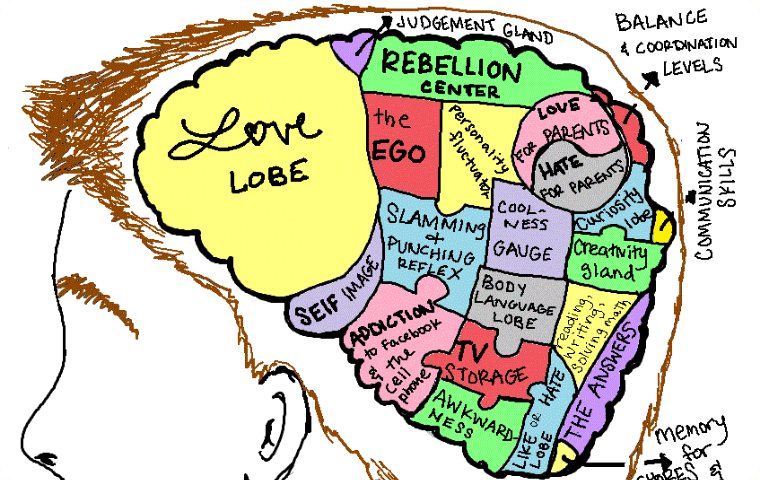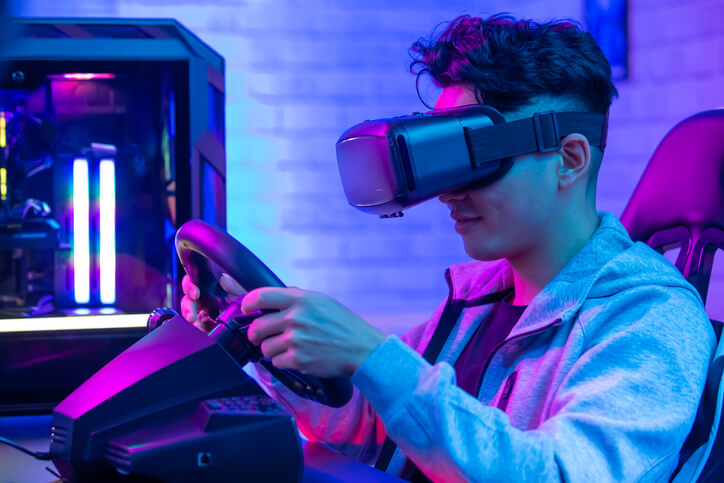The human brain is a tricky organ, one that we'll study for lifetimes to come. Luckily, researchers have discovered at least a few things about it.
When it comes to driving, it’s important to understand what young drivers are doing. It’s not just that they don’t have the same degree of experience — it’s that their brain is different from an older person’s. In other words, a teenager's driving isn't going to be the same as an adult's.
We’ll look at what the research says about young drivers. This can give you a better sense of what you can expect from a teenager behind the wheel. It may also help you understand how to improve everyone’s safety on the road.
The statistics of teen driver crashes
Elizabeth Walshe is a Ph.D. research scientist at the Center for Injury Research and Prevention (CIRP) at the Children’s Hospital of Philadelphia (CHOP). In 2017, she summarized her research about the kinds of errors that lead to teen driver crashes.
Along with colleagues at CIRP and the Annenberg Public Policy at Penn, Walshe found three common mistakes. These mistakes would lead to about half of all crashes:
- Lack of awareness: Drivers need to scan for anything from hazards to other drivers. When they can’t detect the dangers, they’re more likely to fall prey to them.
- Speed: Going too fast for the conditions of the road is a common mistake of teenage drivers.
- Distractions: Teenagers notice everything from shoe sale signs to cute pedestrians. Distractions are a common cause of crashes.
Rear-ending another driver, left-hand turn collisions, and running off the road were regular occurrences.
The cognitive abilities of teenage drivers are still somewhat in question. However, the research is growing with everything from new research to proposed theories. The evidence shows some functions of the brain that are more important than others.
The executive functions of the frontal lobe
There are three major purposes of the frontal lobe, and we think you’ll agree that they’re some of the most important.
As the brain develops, it needs time to work out how to deal with different kinds of problems
These are processes that help us make decisions, watch our behavior, and manage difficult jobs. A teenager who is learning the ropes of the road will often use all the following to make it from Point A to Point B.
- Working memory: This executive function refers to our ability to multitask. It means we remember and work with the information in the moment to improvise for best outcomes.
- Set-shifting: This is our ability to rank tasks in rules, depending on what setting we’re in. Drivers need to be able to change their focus. This way, they can pay attention to the most dangerous parts of the road. Set-shifting keeps them (and everyone else) safe.
- Inhibitory control: This refers to the ability to block out distracting information. So instead of pulling a U-turn because they missed an exit, teenagers keep driving forward.
Walshe and her colleagues found these skills are difficult to control for teenagers. As the brain develops, it needs time to work out how to deal with different kinds of problems.
Not every function of the frontal lobe meant poor outcomes on the road. Walshe reviewed studies to understand how crashes affect the developing brain. She found set-shifting didn’t cause the most serious crashes. However, working memory and inhibitory control did. So, it seems that teenage drivers were able to shift their attention to danger. Inhibitory control did get in the way though.
In addition she found that those with higher working memory (which is possible to have during your teenage years) are actually more likely to take risks on the road. Walshe and her colleagues said that this may have something to do with their level of confidence. For instance, they might feel confident that they can both run a red light and stay safe on the road.
Skill Deficits: Why Risks are Amplified During Teenage Years
The adage of practice makes perfect isn’t cliche advice. When a teenage driver bids adieu to their learner’s permit, they do so with serious skill deficits. In short, they don’t have the same experience as practiced drivers. This increases their risk of getting into a crash.
But it’s not just driving experience that accounts for serious crashes. (It’s certainly part of the equation, but there’s more to it than that.) The frontal lobe of the brain during the teenage years is still developing. It means that the lack of practice is part of the problem. The brain is the other part.
In one study published in the Journal of the American Medical Association, it was found that working memory develops into the 20s. Walshe concluded the most important function for teenage drivers was working memory. This is likely because driving is still novel to them. A 25-year veteran of driving may be able to drive home without remembering how they drove home. However, a teenager is still getting used to doing multiple things at the same time.
Working memory is all about managing difficult jobs. It can make teenagers think they’re great at driving even when they’re not. So, a 17-year-old driver won’t have the same abilities as a 20-year-old. A 20-year-old won’t have the same abilities as a 25-year-old. As the brain develops, it needs time to work out how to deal with different kinds of problems.
A lack of working memory is connected to distracted driving, traffic citations, crashes, and poor detection of hazards on the road. In simulations, teenagers with poor working memory had trouble staying in the same lane. Inhibition (or lack thereof) is also related to risky behavior, including speeding and lane drifting. This information comes from both self-reported data as well as simulated driving studies.
So, a teenager may not be able to change lanes while paying attention to the light. They may not be able to be able to adjust a mirror and keep one eye on the road. Researchers suggest that regular evaluations of a person’s working memory may help. This way, people could routinely assess the safety risks. Because younger drivers have these skill deficits, it may take some intervention.
Why driver training can help
Besides technology available today (e.g., driver assist systems, cell-phone blockers), a driver training course can be a game-changing idea. This can improve a teenage driver’s safety on the road by leaps and bounds.
A lack of working memory is connected to distracted driving, traffic citations, crashes, and poor detection of hazards on the road
The concepts taught in these classes are based on an established body of research. This is real evidence used to reduce the number of crashes and correct common errors that adolescents are more prone to make.
A driver course can be used to train drivers with poor working memory to handle more multitasking demands on the road. It can also drill into them — until they do it without thinking — the need to tune out things like the radio, cell phone alerts, and dancing sign holders on the side of the road.
The right driving course can mean everything to a young driver, as it has a lot to do with the outcomes of every trip. All those near-misses aren’t just a fluke, they’re a real cause for concern. While the last thing an adolescent is likely going to want to do is sign up for more training, it can be necessary to keep them and other people protected.
Just make sure to find a company that understands. When it comes to behavior, there’s more going on than being a teenager. There are real processes taking place in the brain that need to be acknowledged before they can be improved upon. The good news is that there is hope for every teenage driver. They just may need a little help before their brain can take care of everything on their own.
Liam Hoch researches and writes about safe driving for DriverZ.
Having been a passenger in multiple near-catastrophic vehicle collisions, Liam knows first-hand the dangers of distracted, reckless, and unsafe driving.
Passionate about our core principles of helping to make safer drivers and, ultimately, saving lives, Liam stays at the forefront of driving safety innovation and research.














